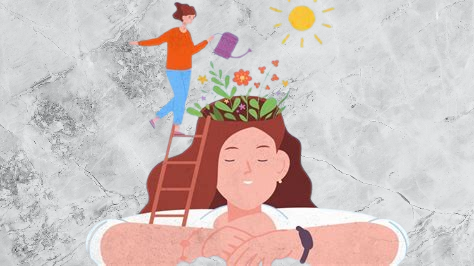Table of Contents
Seasonal depression, commonly referred to as Seasonal Affective Disorder (SAD), is a type of depression that typically occurs during certain times of the year, most commonly in the winter months. Individuals affected by this condition experience depressive symptoms that correspond to changes in seasons, particularly when daylight hours are shorter. Unlike other forms of depression, seasonal depression is closely linked to environmental factors, particularly the reduction of natural sunlight. This lack of sunlight can disrupt the body’s internal clock or circadian rhythms, resulting in biochemical changes that affect mood.
Symptoms of seasonal depression can vary but commonly include persistent sadness, fatigue, changes in appetite, and difficulty concentrating. Some individuals may also experience disrupted sleep patterns or a withdrawal from social activities. It is important to note that while SAD shares characteristics with major depressive disorder, its seasonal pattern distinguishes it. Those suffering from seasonal depression may notice that their symptoms improve as the days become longer and sunnier, typically in the spring and summer months.
The biological factors contributing to seasonal depression are complex. Reduced sunlight in winter can lead to decreased levels of serotonin, a neurotransmitter that plays a key role in regulating mood. Additionally, the production of melatonin, a hormone responsible for sleep-regulation, may increase during the darker months, leading to feelings of lethargy and sadness. Understanding these underlying mechanisms is vital for recognizing the signs of seasonal affective disorder.
Environmental factors also play a significant role in the incidence of SAD. Geographic location, with northern latitudes often experiencing higher rates of seasonal depression, reflects the importance of sunlight exposure. By understanding these facets of seasonal depression, individuals can better identify whether they or someone they know may be affected, enabling them to seek appropriate support and treatment options.
The Science Behind Seasonal Depression
Seasonal depression, often referred to as Seasonal Affective Disorder (SAD), is a type of depression that tends to occur during specific seasons, most commonly in winter when daylight hours are shorter. Understanding the scientific mechanisms behind this condition can provide valuable insights into its causes and effect on individuals. A critical element in the development of seasonal depression is the fluctuation of melatonin and serotonin levels in the brain. Melatonin, a hormone associated with sleep regulation, increases in response to darkness, which can lead to feelings of lethargy and sadness during winter months.
Conversely, serotonin, often termed the “feel-good” neurotransmitter, is linked to mood regulation. Exposure to sunlight is vital for the synthesis of serotonin; thus, reduced sunlight during winter not only hampers its production but also affects mood stability. The brain’s inability to balance these two hormones can create a ripple effect, influencing overall emotional well-being and leading to symptoms commonly associated with seasonal depression, such as fatigue, irritability, and changes in appetite.
The body’s circadian rhythm—the 24-hour internal clock that regulates various biological processes including sleep-wake cycles—also plays a significant role in the mood variations experienced during different seasons. Disruption of this rhythm due to shorter days can lead to irregular sleep patterns, heightening stress levels and exacerbating feelings of sadness. Furthermore, individuals with pre-existing mental health conditions may find their symptoms intensified during the winter months due to these hormonal and circadian disruptions.
Recognizing these scientific factors can empower individuals to seek treatment and implement coping strategies more effectively. Enhanced awareness is crucial in addressing seasonal depression, allowing those affected to understand that their emotional responses may be rooted in biological changes rather than personal shortcomings.
Signs and Symptoms of Seasonal Depression
Seasonal depression, also known as Seasonal Affective Disorder (SAD), is characterized by a specific set of symptoms that typically emerge during the winter months when daylight hours are shorter. Understanding these symptoms is crucial for timely identification and effective management of the condition. One of the most common signs of seasonal depression is persistent fatigue. Individuals often report feeling unusually tired, lacking energy to engage in daily activities or enjoy previously pleasurable pursuits.
Changes in sleep patterns can also be significant indicators of seasonal depression. Some individuals may experience hypersomnia, finding themselves sleeping more than usual, while others might struggle with insomnia, facing difficulties in both falling asleep and maintaining sleep. These alterations in sleep can exacerbate feelings of exhaustion and contribute to a cycle of lethargy.
Appetite changes are another prevalent symptom associated with seasonal depression. Many people notice an increase in cravings for carbohydrates, leading to overeating and subsequent weight gain. Conversely, some people may lose interest in food altogether, leading to weight loss and further physical decline. These shifts in eating habits are reflective of the mood fluctuations that accompany this disorder.
Moreover, individuals suffering from seasonal depression often experience feelings of hopelessness and sadness. These emotional symptoms can manifest in irritability, mood swings, or a general sense of discontent. It may become increasingly difficult to cope with stress, resulting in diminished social interaction and withdrawal from previously enjoyed activities.
Recognizing these signs and symptoms of seasonal depression is essential for seeking appropriate support and treatment. By maintaining awareness of the various manifestations of this condition, individuals can take proactive steps to address their mental health during the challenging winter months.
Effective Coping Strategies for Winter Months
Managing seasonal depression, particularly during the winter months, can be challenging. However, implementing certain practical strategies can significantly improve overall well-being and mental health. One effective approach is to incorporate regular physical exercise into your routine. Engaging in physical activity releases endorphins, which can enhance mood and promote feelings of happiness. Activities such as brisk walking, yoga, or swimming can not only increase energy levels but also serve as a natural antidote to feelings of lethargy often associated with the winter.
Another important strategy is to maintain a balanced and healthy diet. Nutrition plays a crucial role in mental health; thus, consuming a diet rich in fruits, vegetables, whole grains, and lean proteins can provide the necessary nutrients to support brain function. Omega-3 fatty acids, commonly found in fish, are particularly beneficial for mood regulation. Staying hydrated is also essential, as dehydration can mimic symptoms of depression.
Social interactions are equally significant in combating seasonal depression. Making an effort to connect with friends and family, whether through in-person gatherings or virtual meetings, can foster a sense of belonging and reduce feelings of isolation. Participating in group activities or community events can also provide a support network and create opportunities for social engagement.
Furthermore, creating a supportive environment at home is paramount. This may include maintaining a clean and organized living space, which can have a positive impact on mental clarity and reduce anxiety. Enhancing natural light exposure by opening curtains or using light therapy lamps can also aid in alleviating depressive symptoms. Establishing a comforting daily routine allows for a sense of stability and predictability during the oft-chaotic season of winter.
By adopting these coping strategies—exercise, nutrition, social interactions, and creating a supportive environment—individuals can navigate the winter months with greater resilience and strength, ultimately improving their mental health during this challenging period.
The Power of Light Therapy
Light therapy is recognized as an effective treatment for seasonal depression, particularly for those suffering from Seasonal Affective Disorder (SAD). This therapeutic approach involves exposure to artificial light that mimics natural sunlight, helping to alleviate depressive symptoms during the darker months. The underlying mechanism is thought to involve the regulation of melatonin and serotonin levels in the brain, which are crucial in mood stabilization. When individuals are deprived of natural light, especially in winter, these processes become disrupted, leading to feelings of sadness, lethargy, and irritability.
There are various types of light therapy devices available, including light boxes, light visors, and dawn simulators. Light boxes are the most commonly used form of light therapy. They typically emit bright light at an intensity of 10,000 lux, and should be placed at eye level, approximately two feet away from the user. It is important to choose a box that filters out ultraviolet (UV) rays to protect the skin and eyes. Light visors, worn like a cap, can be used for mobility while receiving treatment, while dawn simulators gradually increase light intensity in the morning, mimicking the natural sunrise to ease the awakening process.
When employing light therapy, consistency is crucial. The recommended duration of exposure is typically 20 to 30 minutes each day, preferably in the morning, to ensure maximum benefits. Research has shown that this practice can significantly improve mood, increase energy levels, and enhance overall well-being. Studies confirm that many individuals with SAD experience a marked reduction in symptoms after just a few weeks of regular light therapy sessions. Case studies suggest that integrating light therapy into a broader treatment plan—including psychotherapy and medication—can yield even more effective results for those navigating the challenges of seasonal depression.
The Role of Mindfulness and Meditation
Seasonal depression, often exacerbated by the winter months, can significantly impact an individual’s emotional well-being. One effective approach to combat this condition is through mindfulness and meditation practices, which promote a state of awareness and acceptance of the present moment. These techniques are increasingly recognized for their ability to improve mental health and alleviate the symptoms associated with this type of depression.
Mindfulness involves paying conscious attention to our thoughts, feelings, and bodily sensations without judgement. This practice can be integrated into daily routines, allowing individuals to cultivate a deeper awareness of the experiences that trigger feelings of sadness or anxiety. Techniques such as deep breathing are foundational to mindfulness. By focusing on breath, practitioners can ground themselves, helping to reduce stress and create a sense of calm. Taking just a few minutes each day to engage in this practice can serve as a powerful tool for emotional regulation during the darker months.
Guided imagery is another technique that can enhance mindfulness practices. This method involves visualizing peaceful and soothing environments, thereby encouraging relaxation and providing a mental escape from the bleakness of winter. By immersing oneself in positive visualizations, individuals may experience a shift in mood and an improved sense of well-being.
Furthermore, mindfulness meditation encourages individuals to observe their thoughts without becoming attached to them, fostering a non-reactive mindset. This approach can lead to an increased sense of emotional resilience, helping individuals better cope with the challenges of seasonal depression. Regular practice of mindfulness and meditation not only reduces stress but also promotes an overall enhancement in mood and mental clarity, serving as effective strategies to navigate the emotional complexities that often accompany the winter months.
Seeking Professional Help
Seasonal depression, also known as seasonal affective disorder (SAD), can significantly impact an individual’s quality of life, particularly during the winter months when daylight is scarce. While self-help strategies, such as light therapy, physical activity, and social interaction, can be beneficial, they may not be sufficient for everyone. In such cases, it is crucial to seek professional help to address the symptoms effectively.
Various types of mental health professionals can assist individuals struggling with seasonal depression. Therapists, psychologists, and psychiatrists are trained to diagnose and treat mood disorders, including SAD. Therapists and psychologists typically focus on psychotherapy — a process that involves talking through feelings, thoughts, and behaviors to identify patterns and develop coping strategies. Cognitive-behavioral therapy (CBT) is one effective form of psychotherapy for SAD, as it helps individuals reframe negative thought patterns and improve their emotional responses to seasonal changes.
On the other hand, psychiatrists can provide a diagnosis and, if necessary, prescribe medication to help alleviate symptoms of seasonal depression. Antidepressants, particularly selective serotonin reuptake inhibitors (SSRIs), may be recommended to help manage mood swings and anxiety levels associated with this disorder. Consulting a primary care provider can also be a valuable first step, as they can refer patients to mental health specialists for further evaluation and treatment.
It is important to emphasize the significance of breaking the stigma surrounding mental health support. Seeking help is not a sign of weakness; rather, it reflects strength and self-awareness. By reaching out for professional guidance, individuals can explore a range of treatment options tailored to their specific needs, ultimately promoting recovery and enhancing their overall well-being during the challenging winter months.
Creating a Support Network
Managing seasonal depression can be particularly challenging during the winter months, making the establishment of a robust support network essential. This network can consist of family, friends, and communities that provide emotional sustenance and understanding. One of the first steps in creating this support system is to openly communicate your feelings to those close to you. It may feel daunting to share your struggles, but initiating conversations about your experience with seasonal affective disorder (SAD) can help others understand your needs and offer appropriate support.
When discussing your mental health, consider expressing specific emotions and symptoms you encounter. This clarity can lead to more empathetic responses. Additionally, educating your support system about seasonal depression can create a more profound understanding of your condition, as many individuals may not be aware of its effects. Encouraging your loved ones to ask questions and express their concerns can foster a supportive dialogue.
Additionally, engaging with communities or groups that focus on mental health can be incredibly beneficial. Look for local or online support groups where individuals share similar experiences. These platforms not only provide connection but also valuable coping strategies. Participating in group discussions or forums can help individuals feel less isolated and create opportunities for social interactions, which can improve overall mental well-being.
It is important to remember that social interactions are often crucial for combating feelings of loneliness, particularly in winter. Regularly reaching out to your support network for casual meet-ups, phone calls, or virtual hangouts can provide the connections that alleviate the negative emotions associated with seasonal depression. Establishing a reliable support network can contribute significantly to navigating through the winter months more comfortably. Therefore, take proactive steps to identify and strengthen these relationships, ensuring you have a foundation of support during challenging times.
Monitoring Progress and Adjusting Strategies
Effectively managing seasonal depression requires ongoing evaluation and adaptation of personal strategies. One crucial aspect of this process is monitoring one’s progress. Keeping a journal can be an invaluable tool in this regard. Through journaling, individuals can track their daily moods and experiences, providing insights into patterns that may emerge over time. This documentation can help identify triggers that exacerbate symptoms, as well as highlight moments of improvement or resilience.
Tracking mood variations can aid in recognizing which coping mechanisms serve a particular individual best. It is essential to evaluate the efficacy of different strategies regularly. Individuals might find that methods such as light therapy, physical activity, social engagement, or mindfulness practices yield varying results throughout the winter months. By reflecting on what works and what does not, one can make informed adjustments to their approach. This iterative process allows individuals to refine their strategies to better manage their seasonal depression, ultimately enhancing well-being.
Flexibility is a key component of successfully navigating the complexities of seasonal depression. While it’s important to have a plan, rigid adherence to a singular approach can lead to frustration and discouragement. It is beneficial to remain open to change and experimentation, modifying strategies based on both immediate needs and overarching patterns observed through journaling. This adaptability fosters a sense of control and empowerment, essential for mental health recovery.
Equally important is the practice of self-compassion throughout this journey. Recognizing that managing seasonal depression is a continuous process, filled with ups and downs, encourages individuals to treat themselves with kindness. Understanding that setbacks may occur allows for a more forgiving approach to personal progress. Ultimately, fostering an attitude of patience and understanding towards oneself can significantly enhance the effectiveness of coping strategies, making it easier to navigate the challenges of seasonal affective disorder.




[…] the field of digital health is witnessing a surge in tools aimed at fostering emotional intelligence. Mobile applications and online programs provide individuals with resources […]